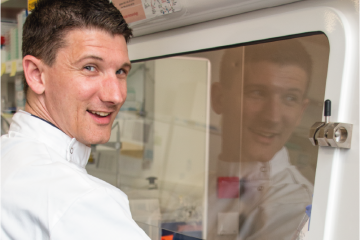Project grant
A chicken primary B cell culture model to study the pathogenesis and improve the control of immunosuppressive viruses of poultry

At a glance
Completed
Award date
December 2017 - February 2020
Grant amount
£349,071
Principal investigator
Dr Andrew Broadbent
Co-investigator(s)
Institute
The Pirbright Institute
R
- Replacement
Read the abstract
View the grant profile on GtR
